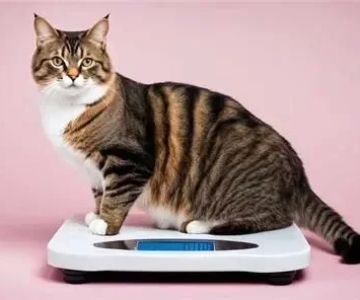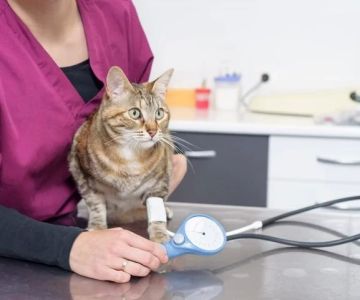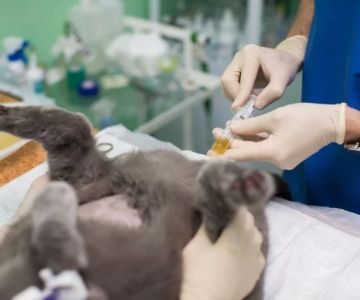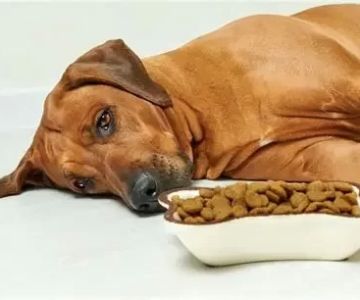How to Prevent Obesity in Pets with Proper Care and Diet
- 1. Introduction to Obesity in Pets
- 2. Causes of Obesity in Pets
- 3. Signs of Obesity in Pets
- 4. Preventive Care and Diet for Pets
- 5. Case Study on Preventing Obesity
- 6. Products to Help Prevent Obesity in Pets
Obesity in pets is a growing concern, with studies showing that nearly 60% of pets in the United States are overweight or obese. Just like in humans, obesity in pets can lead to serious health problems, including diabetes, heart disease, joint issues, and a shorter lifespan. But the good news is, preventing obesity in pets is achievable with proper care and diet.
Obesity in pets usually results from a combination of factors, with the most common being overfeeding, lack of exercise, and a sedentary lifestyle. Many pet owners may unknowingly contribute to this by offering treats too often or feeding large portions. Additionally, pets who are left indoors for long periods or do not get enough playtime are at a higher risk of gaining weight.
Breed also plays a role, with certain dog and cat breeds being more prone to obesity. However, the key to preventing obesity is understanding the root causes and taking proactive measures to maintain a healthy weight.
Recognizing the signs of obesity in pets is essential to managing their weight before it becomes a serious issue. Common signs of obesity in pets include:
- Ribs that are hard to feel or completely hidden under fat.
- Difficulty breathing or excessive panting, even with mild exercise.
- Reluctance to move, run, or play.
- Visible signs of lethargy and lack of energy.
- Increased food consumption without corresponding physical activity.
If you notice any of these signs, it’s time to reevaluate your pet’s diet and exercise routine.
The most effective way to prevent obesity in pets is by providing balanced care and a proper diet. Here are some key steps to ensure your pet remains healthy and fit:

9300 Monroe Rd, Charlotte, NC 28270, USA
See Details1. Controlled Portions
Portion control is essential. Overfeeding, even with high-quality food, can lead to weight gain. Consult with your vet to determine the correct portion sizes based on your pet’s breed, size, and activity level.
2. High-Quality Diet
Feed your pet a well-balanced, nutritious diet. Look for foods that are rich in protein and low in fats. Avoid feeding pets human food or snacks that may be high in calories.
3. Regular Exercise
Regular exercise is crucial. Make sure your pet gets enough physical activity each day to burn calories and maintain muscle mass. Walks, playtime, and interactive toys are excellent ways to engage your pet and prevent boredom-induced overeating.
Consider the case of a Golden Retriever named Max. Max was overweight and struggled with joint issues due to excess weight. His owner, concerned about his health, made changes to his diet and exercise routine. Max's diet was adjusted to a high-protein, low-fat formula with controlled portions. His owner also incorporated daily walks and playtime into their routine. Within six months, Max lost 10 pounds and regained energy, improving his overall health. This case highlights the importance of diet and exercise in managing pet obesity.
To help prevent obesity in pets, there are several products on the market that can aid in monitoring and managing their weight:
1. Smart Feeders
Smart feeders help pet owners control portions and prevent overfeeding by offering scheduled meals at set times.
2. Interactive Toys
Interactive toys encourage physical activity by engaging pets in play, helping them burn calories while having fun.
3. Pet Fitness Trackers
Fitness trackers for pets can monitor activity levels and track weight loss progress, providing valuable insights into your pet’s health.
Investing in these products can significantly aid in preventing obesity and promoting a healthy lifestyle for your pets.
To summarize, preventing obesity in pets requires a comprehensive approach involving proper diet, exercise, and regular monitoring. With the right care, your pet can maintain a healthy weight and enjoy a long, happy life. If you're looking for effective products to manage your pet's weight, consider exploring the latest smart feeders, interactive toys, and fitness trackers to make the process easier and more enjoyable for both you and your pet.










